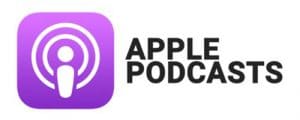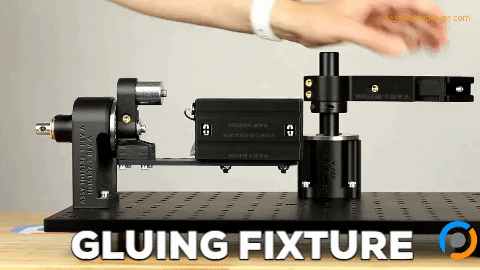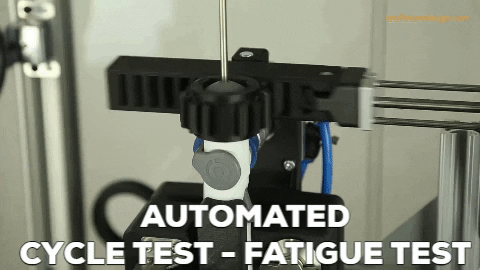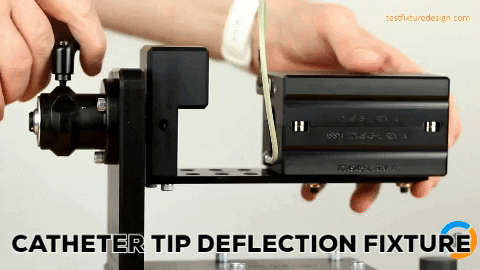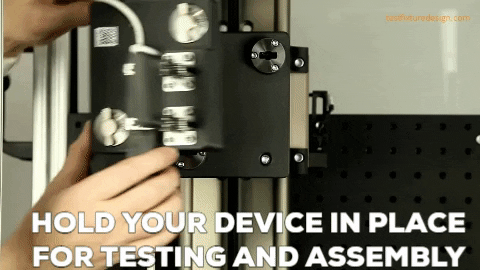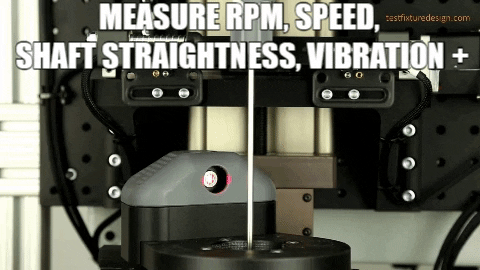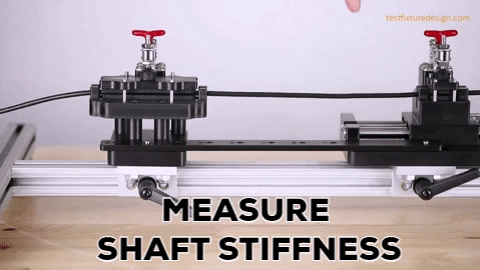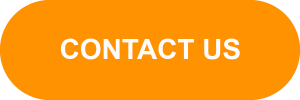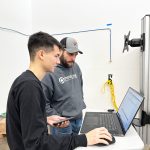Rushabh Dhapodkar | R&D Engineering Series – Interview 3 of 6
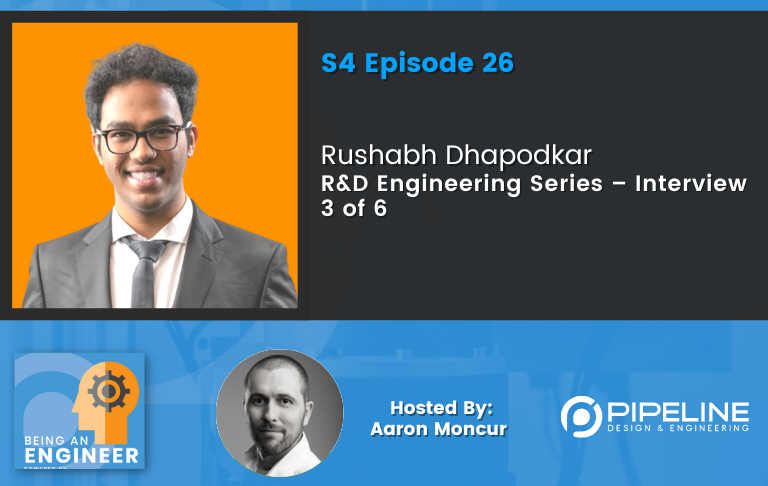
Who is Rushabh Dhapodkar?
Rushabh Dhapodkar is a mechanical engineer who has held several R&D roles and is currently working at Leggett & Platt, a furniture and home furnishings manufacturer.
Hi, everyone. We’ve set up this being an engineer podcast as an industry knowledge repository, if you will, we hope it’ll be a tool where engineers can learn about and connect with other companies, technologies, people, resources and opportunities. So make some connections and enjoy the show.
Rushabh Dhapodkar 00:18
Taking the company to the next step, so people people like to see new product, something new or something edgy, or they like to be like, Hey, this is the new cool thing which is happening.
Aaron Moncur 00:42
Hello, and welcome to the being an engineer Podcast. Today we’re speaking with Rushabh Dhapodkar, a mechanical engineer who has held several r&d roles and is currently working at a company called leggett and Platt, a furniture and home furnishings manufacturer. Rushabh, thank you so much for joining us today on the show.
Rushabh Dhapodkar 01:02
Thank you so much, Aaron. Thank you for having me. I’m excited to be here. Great.
Aaron Moncur 01:06
Great. All right. So first question. This is like the typical the standard, being an engineer start off question, what made you decide to become an engineer?
Rushabh Dhapodkar 01:16
I love solving problems. And I love solving problems which solve people people’s problems. So something working on products, any products, which which makes your life easy. That’s what inspired me to become an engineer.
Aaron Moncur 01:34
Growing up, were there problems that you remember specifically where you solve to them? And you thought, Oh, that was so fun this like, I would like to do that for a job.
Rushabh Dhapodkar 01:44
Oh, yes. So I like I usually, the birthday gifts, which I received were like Lego products, or any cars or anything which was assembled like puzzles and stuff. So after working on that, and on those little projects, like a child, I grew up with an ability to like, do problem solving. And when you when you work on something, and you see that legal set coming together, or the car coming together, or the puzzles fitting at the right spot, that gives you a that gives me a satisfaction. So yes, totally that. That’s yeah,
Aaron Moncur 02:27
I think all the engineers out there can relate to the thrill that we experienced when the the Legos go together where the puzzle pieces go together, right? Like, yeah, we did it solved it. Yeah, yeah. All right. Well, this is episode three of six of a series that we’re doing specifically on r&d. So most of the questions will focus on that topic. And to start off, do you think of yourself specifically, as an r&d engineer, or just generally an engineer? And what even do you think is the difference between the two?
Rushabh Dhapodkar 03:04
So I, I think of, I think of myself as an engineer, who does r&d job. So it’s a combination of I work in the r&d department. So it’s a combination of the commercial products, as well as the r&d products. So we are working on the prototypes, innovations, what would be the next big thing for the company to be in the market. And on the other side, we are also thinking of how we are taking our existing products to become like commercialized and just grow their supply chain or availability over the market to a mass to mass people. So it’s a combination of both I would say 5050.
Aaron Moncur 03:47
Yeah, that that makes sense. How, how do you define r&d, engineering? What’s What’s the definition in your mind?
Rushabh Dhapodkar 03:56
So r&d engineering, according to me would be utilizing the existing materials or ideas or products of the company, and combining them with upcoming technologies to see how they fit together for the upcoming products in the market. So taking the company to the next step as people, people like to see new product, something new or something edgy, or they like to be Hey, this is a new cool thing, which is happening in the automobile market or furniture market, in my case, our cell phones. So an r&d engineer puts together tries tests, all those things, and hopefully something comes out of it. Yeah,
Aaron Moncur 04:42
hopefully read something. Yeah, something new. Yeah. So based on your experience in r&d environments, what are some of the challenges like the common challenges that you seem to run into, over and over?
Rushabh Dhapodkar 04:57
So the common challenges is When I first telophase, it was with the safety team. So we put together a prototype, it’s good to go, it’s a little bit heavy. So UPS is going to be a bit not happy, or the upper management is like, okay, it’s going like 10 cents above the budget. But as per engineering side, it makes sense. It might not look aesthetically good, or have some pinch points. That’s where the safety team comes back to it. Yes, that’s the hiccups, which you see when you produce a prototype, and then others and hold on.
Aaron Moncur 05:36
So from an art from an engineering standpoint, everything makes sense. Everything works. But then how do I say this? I guess the making your engineering choices compatible with other disciplines, whether it’s marketing or safety, or, or management, whatever? Yeah, yeah. Yeah,
Rushabh Dhapodkar 06:00
that’s a good one. Yeah, that you have to think about what will happen when this product goes to the customer nowadays, because there are many concerns, and someone just might, you know, sue the company for like, hey, it broke.
Aaron Moncur 06:15
Yeah. Yeah. In as an r&d engineer, do you enjoy solving those problems as well? Or do you really, would you prefer to just focus on the engineering stuff? And then, yeah, there’s like a safety thing, but someone else, I’d rather someone else take care of that give me some more like r&d stuff to work on.
Rushabh Dhapodkar 06:33
We do have to, we do have to care about those things. We have female meetings, the design, failure modes, effects and analysis meetings every month for every project, we are pushing out. So we have the ops team operations team coming in and they are saying like, hey, this Val joined, did not perform well, after five years. So can we try to change that? And these are the customer reviews? They have been showing up in the products which have been shipped. So he, yes, if you do have to keep those in mind. And it’s definitely a learning curve. And you will receive customer feedback and how a product is going to the market? Yeah,
Aaron Moncur 07:12
yeah. Well, what are some of the tools that you really enjoy using in r&d, some of your favorite r&d tools,
Rushabh Dhapodkar 07:19
so favorite r&d tools with the top one would be SolidWorks, where you design everything, you put all your ideas together, then show people what you’re thinking how it looks like. The other is prototyping, we do have 3d printers. So we prototype, and we put together on Autodesk mess mixture, and we print it out. So that also helps you get a feel of some small products and small. The little piece which would fit in the bigger puzzle, so yeah, these two 3d printers and possibly SolidWorks. Yeah.
Aaron Moncur 07:57
When you think about SolidWorks, CAD 3d printing, are there any shortcomings where you wish they would be better? Or faster? Or? Or something different? Or are you pretty satisfied with the those tools as they exist?
Rushabh Dhapodkar 08:11
So with the with the growth and voice commands and the voice technology, I wish, or if, even if there, it’s out there in SolidWorks? I’m not sure what if there is something where I could just say like, Hey, make me a one by two cross to hollow, but 14 gauge steel 50 inches long, it will just show up. So that’s one thing, which has, which I have seen in my job being have done repeatedly. So if that is automated, that would be great. Obviously, there is a design library and someone can create it out. But I need 36.52 inches sock.
Aaron Moncur 08:56
That would be really cool. Being able to give voice commands to SolidWorks and come up with simple shapes. Yeah, I’m grateful. Well, I guess along those lines, what are some things that you do as an r&d engineer that you wish could be done 10 times faster?
Rushabh Dhapodkar 09:16
Possibly the drawings which we do in drafting. So you do need those experienced drafters to do your drawings and check the tolerances, and they put in all the efforts everywhere. But if I have like a model, which just turns into a drawing pretty fast, so that I can get my technician to like, hey, started tomorrow, because I’m running this. So I need to get I know that I’ll solve about macros. I need to learn to do those things, but still something quicker than those two. Yeah.
Aaron Moncur 09:55
Yeah, for sure. I hear you. I don’t think I’m better an engineer out there who does just loves doing drawings, you know, the 3d that’s the fun stuff I’m trying to just unnecessary. It’s not an evil, but they’re necessary necessary for now. Until model based definition becomes a much, much more prevalent solution anyway. Yeah. Well, let’s see, thank you back over the different projects that you’ve worked on, what what is one of your proudest accomplishments as an r&d engineer?
Rushabh Dhapodkar 10:29
So my proudest accomplishments, or I should say, so it’s a team effort, because it was my first project at leggett and Platt. So they were trying to install IoT devices, they are still trying to install IoT devices, on beds. So in the furniture industry, it is it is yet to be explored with all the sensors coming in and to collecting data and fitness data. So my first project was having a bed which will go up and down or change its shape in some way, and have some voice commands to do that. So which was pretty cool. So yeah, that’s awesome. Yeah. So if you snore, it will, it will change its shape so that you stop snoring, or it will help you with a better sleep. Because I think that is a medical research study, which, which states how you snore, or how your head is tilted when you’re sleeping, opens up the air flow to your lungs. And that’s why you snore, plus there is fat or something on the neck side, but on the air side, it can be solved by adjusting your head. So
Aaron Moncur 11:42
I didn’t know that that existed. And that sounds like something that I could use tonight. And my wife would be so happy for that solution. I’m constantly getting kicked and nudged in the middle of the night, because I see him making noise.
Rushabh Dhapodkar 11:58
You’re welcome to try leggett and Platt products. Awesome.
Aaron Moncur 12:01
Awesome. Are we going to check out the website right after this? Yeah. All right, what’s something that you wish others would understand about r&d That, that maybe, I don’t know other other engineers, not in the r&d space, or even leadership or management doesn’t fully appreciate?
Rushabh Dhapodkar 12:23
So sometimes when you look at a product, and let’s say you have worked on that specific feature of a product for the past, like four years, and you have you have your expert engineers working on it, but now you have a new product, which is launching today. And the upper management says like, Okay, we have this feature, we are expert at it since four years. Get it done in one month or two months. And then we assess r&d engineers, we have to tell them like, hey, no, it’s, even though the feature is existing, we need like four or five, or probably six months to perfect at like, on the new product. So the one gap between being an engineer and seeing the product from outside is not understanding the fact that engineering side of r&d might take some time, because we have to go through all the tests the making sure that works well, before we put it put forward. We don’t want it to break in front of the upper management, and they’re like, Hey, you just wasted my 30 minutes. So
Aaron Moncur 13:32
yeah, like you said, even for existing features, if you’re integrating it into a new product, there’s still work that needs to be done to make sure it works in that new environment, so to speak.
Rushabh Dhapodkar 13:42
Yes, yes, I retrofitting is more. I feel like it’s more difficult compared to like, just having a new feature and a new product so that everything is like brand new. Yeah.
Aaron Moncur 13:55
Yeah. Yeah, I know what you mean. Well, I’m gonna take a very short break here and share with the listeners that Team pipeline.us is where you can learn more about how we help medical device and other product engineering or manufacturing teams, develop turnkey equipment, custom fixtures, and automated machines to characterize, inspect, assemble, manufacture and perform verification testing on your devices. We’re speaking today with a Rushabh toppled curve. And we’re talking about r&d engineering. So along that that same theme there, what is one of your biggest frustrations as an r&d engineer, and also one thing about r&d That really brings you a lot of satisfaction and joy?
Rushabh Dhapodkar 14:46
So I’ll go with frustration first, because then we’ll end up on a good note. And the question on a good note. Perfect. The frustration is, you come up with a design, you present that Design and in your head, you have thought about that design for a good two weeks because we have bi weekly project updates meetings where the r&d team Dalek managers come together and sit and test or see what’s going on in the project. And you have given it your analytical, logical thought, and you have come up with a design. And it gets bashed on the first
Aaron Moncur 15:26
- It’s hard.
Rushabh Dhapodkar 15:29
They’re a okay, this, this is not up to our standard, it’s not gonna fit here, it’s not gonna work like that we have done this before, go check this out. And like, okay. That’s all you can say in the meeting. All right, I’m gonna do my homework. I’m gonna go back. So getting getting some kind of criticism, which, which doesn’t help you, but just stops your progress. That’s frustrating. So I mean, the the cooperation or all the team is supportive, but sometimes that 10% When they are not, yeah, yeah, they went when they can’t be because they have never done it. Because it’s yeah, that’s for sure thing. Yeah, the good thing. I think the second part was the good thing about being an r&d. So the second part is good thing about r&d is, I get to feel the product, which is going to go in to be seen by the customer after like a year or two, just like today. So I am already living in the future of technology or future of what a customer would think a wow factor of the product, which would be in the market. Like if you’re saying to if you’re if you’re calling a new phone or a watch, or like your car while the r&d engineer has worked, tested, proudly live, lived in the car, had the furniture in their house like two years ago. So being the first pioneer or sorry, not the Pioneer, but like being the first to use the product before anyone knows. That’s the best part.
Aaron Moncur 17:08
Yeah, like advanced access, right? Access. Yeah, everyone else has access. Yeah, that is very cool. Being on the bleeding edge there. What do you think are some of the most difficult things to teach others about being an r&d engineer?
Rushabh Dhapodkar 17:31
So one of the difficult things which I think teaching someone is how to think, or how to approach a problem, sometimes what happens is, senior leader would come and tell you like, Hey, this is what I’m expecting. This is what I want. Or this is the new feature, or this is how I imagined this product, project or product to be going ahead. So if you had a new r&d engineer, aligning the score pop off his or his vision, because he has that experience in the industry or the company for so long. But you are the new guy. I think that is a bit difficult. So that could be easily resolved by being with the company understanding the product, getting your fundamentals, right, talking to the engineers, or senior engineers who have been in the situation, possibly learning from their experiences. So that would solve the issue. But the difficult part is having the mental ability to imagine or understand what you’re leaders or managers are expecting you to
Aaron Moncur 18:40
- Yeah, yeah, that’s a tough one. Right? Yeah. I mean, how do you get in someone else’s mind to really understand what they’re what they’re expecting outside of just having a lot of conversations, but if they’re specially if they’re senior management, you probably don’t have lots of access to them. No pressure? Yeah. Well, maybe the answer to this next question is the same thing. But if you could wave a magic wand and change one thing about the r&d environment, being an r&d engineer, what would it be
Rushabh Dhapodkar 19:16
faster problem solving, I guess, understanding and faster problem solving or sometimes, you know, the product is right for the market, but you have to wait for it to go through all the procedures of the company, who was chopping off materials from abroad or the delay in mass production, and then like getting it to the customer. So just shortening the time of everywhere. So from problem solving to taking it to the customer? i Yeah, yeah. Yeah.
Aaron Moncur 19:55
Are there any? We’d love to shorten timelines everywhere, right? If you had to pick like one or two areas is there one or two areas in particular where you could see particular benefit in the being able to turn something around more quickly.
Rushabh Dhapodkar 20:12
So after COVID, what we have realized in our company is like, it’s better to rely on suppliers who are very local, in United States, or like in countries where you can ship it through roadways like South America, which is very close, or from Mexico or something. So if we could short sequence, if we can quickly research new materials, new suppliers from nearby is accessible companies who are local, hopefully, that would be that would be very helpful, because we have some of our materials being tested, or they were relied on countries, which we don’t have access to right now, because of their financial problems, or their supply chain issues. And that, that has been keeping us a bit behind from what is expected.
Aaron Moncur 21:13
So a more robust database of different suppliers and vendors out there. So you could, yeah, yeah, that makes sense. Yeah. Okay. Well, when you started out as an r&d engineer, did you understand what it meant to be in the field of research and development and, and how has your understanding of that role changed over time, if it has at all
Rushabh Dhapodkar 21:39
so before starting full time at leggett, I did do an internship during my undergrad in a product development team. So the steam they developed sensors for their machinery, which was coming in and they were trying to utilize, what kind of frequencies would work well, is it audible frequencies, ultrasonic, or any infrared sensors that would help us detect an obstacle in front of the machine. So I did have a gist of what r&d meant before I joined Leggett after joining Lego, that was a whole different story. Because I never imagined myself being an r&d engineer in a furniture company. You always see yourself growing up working possibly for an automotive client, or a cell phone company, or like the core mechanical companies, but a furniture client was all new. So I did that.
Aaron Moncur 22:41
That’s interesting. What what new challenges or learning opportunities did you have at a furniture company
Rushabh Dhapodkar 22:50
said a furniture company you really have to work how to work around how the safety of the customer, because there shouldn’t be pinch points I, I am in their Adjustable Bed business. So the adjustable beds, they go up and down. And we have our pets in the household. Yeah, we are babies in the household. And these can crawl below your bed and they might crash their head or something in which you want to avoid. Yes, yes. Yeah, there was new compared to a car driving on the road and discover into someone else a different set of problems need to keep in mind.
Aaron Moncur 23:29
Right? Yeah. Okay. What do you think the most important mindset or attributes are that an r&d engineer can hold?
Rushabh Dhapodkar 23:40
So the most important attribute is to be hunger to learn, and possibly to? To be more focused or detail oriented on what customers are wanting, sometimes you might miss out words in a conversation when it is portrayed to you. So and you should be. I mean, it should be aware of what they’re asking you to do. So, and you should always be hungry to learn and hungry to learn all obviously always aligns with asking questions, so you cannot learn what they are expecting by asking questions. So yeah, that is one of the important attributes to be an r&d engineer.
Aaron Moncur 24:22
I’m hearing the word curiosity in what you’re describing there. Yes, curiosity. Yep. Asking questions wanting to learn. Yeah, yeah. I’ll just keep
Rushabh Dhapodkar 24:31
your eyes and ears open for something new in the industry. And you might never know what might stick at your roll from something. Yeah.
Aaron Moncur 24:41
Well, let’s see just a couple more questions. And we’ll wrap things up here. Let’s pretend that it’s like three years from now. And you’re looking back over the past three years and kind of reflecting what has to be true for you within the context of your role as an r&d Engineer for you To feel really happy and satisfied with what you’ve accomplished the past three years.
Rushabh Dhapodkar 25:05
So in the next three years, I would love to see my products hitting the market. And in the customers hand, it’s a long process r&d process in the furniture industry, it was like a year and a year and a half of testing, getting it shipped to the customers. So in the next three years, I would love to see some of my products in the market. Possibly someone just coming up and say, Hey, like its product are so good. And I’m like, I would secretly just smile inside my head saying like, that was a part of it.
Aaron Moncur 25:38
Yeah, I know exactly what you mean. When when our second child was born, this is 13 years ago now. But we were in the hospital, he had just been born. And one of the nurses came in, and she had this this pendant around her neck, and it was just like communication badge, by a company named Vocera. And you push a button, like, you know, Dr. So and so just letting you know this or that. Anyway, I worked on that product, this Vocera product and it’s like oh, that’s that’s it I designed like this button and that switch and this part of the housing it was so cool to like, you know, see it in real use. So that’s what a what a feeling right to see our our products out there being used by people. Yeah,
Rushabh Dhapodkar 26:25
yeah, absolutely satisfaction of seeing your products come alive.
Aaron Moncur 26:29
Yeah, big time. Big time. Well, Rashad, thank you so much for spending some time with me today. Anything else that you want to share that you think would be useful or insightful or interesting for others to hear about the job of an r&d engineer.
Rushabh Dhapodkar 26:46
I’m one of one of our project management classes. During my graduate degree, the professor came into our classroom and gave us this case study of Imagine you are in 1940s. And you had an automobile manufacturer, and you want to sell your cars. What would you do to sell the cars or increase the sales of the cars. And this is 1940s or 1900s, like the automotive industry is growing. Okay. And all of us being 21st century when kids of internet would say, Okay, I’ll go electric, I’ll increase the mileage, I’ll add some leather seats, big headlights or fancy mirrors. But the professor said, there was an there was a random article in New York Times at that time that about 60 70% of the America has beverages during the morning, morning times, it’s probably a hot beverage or cold beverage. So someone at an automotive company got that data from the newspaper. And he thought it would be good to have a cup holder. And the r&d engineers combined this and there was an invention of cup holder. And now you have five cupholders. So being an r&d engineer is not only about knowing about your world, but having your eyes and ears open about what is going on in the industry. And you can just put it in your product. And hey, you just innovated something by combining two existing features.
Aaron Moncur 28:40
That’s terrific. What a great story. Very cool. Thank you for sharing that. Yeah. Okay, we shall Well, again, thank you so much for sharing some time with us today. Really, really appreciate you being here and and sharing some stories and insights into what it is to be an r&d engineer.
Rushabh Dhapodkar 28:59
It was my pleasure. Thank you so much for having me, Aaron.
Aaron Moncur 29:06
I’m Aaron Moncur, founder of pipeline design and engineering. If you liked what you heard today, please share the episode. To learn how your team can leverage our team’s expertise developing turnkey equipment, custom fixtures and automated machines and with product design, visit us at Teampipeline.us. Thanks for listening.
About Being An Engineer
The Being An Engineer podcast is a repository for industry knowledge and a tool through which engineers learn about and connect with relevant companies, technologies, people resources, and opportunities. We feature successful mechanical engineers and interview engineers who are passionate about their work and who made a great impact on the engineering community.
The Being An Engineer podcast is brought to you by Pipeline Design & Engineering. Pipeline partners with medical & other device engineering teams who need turnkey equipment such as cycle test machines, custom test fixtures, automation equipment, assembly jigs, inspection stations and more. You can find us on the web at www.teampipeline.us

